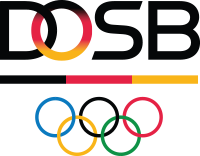Die Olympischen Spiele in Athen haben nach Aussage von Jacques Rogge, dem Präsidenten des Internationalen Olympischen Komitees (IOC), sämtlichen globalen TV-Rekorde gebrochen.
Wie Rogge am Dienstag (13.10.2004) mitteilte, nahmen im August 2004 weltweit 3,9 Milliarden Menschen die Olympia-Übertragungen wahr. Vier Jahre zuvor hatten 3,6 Milliarden Zuschauer die Geschehnisse aus Sydney verfolgt.
Anlässlich einer Ansprache bei der 15. Ausgabe von "Sportel" einem Symposium für Fernseh-Sportanbieter, sagte Rogge: "Athen war ein neuer Meilenstein mit der größten Zuschauerzahl, Übertragungen von spektakulärer Qualität, einem vergrößteren Sende-Angebot, neuen Technologien und nicht zuletzt auch einer großen Zufriedenheit bei unseren TV-Lizenznehmern".
Nachstehend die Pressemeldung des IOC im englischen Wortlaut:
Global TV Viewing Of Athens 2004 Olympic Games Breaks Records
Speaking at the 15th edition of Sportel, the International Sports Television Convention, the President of the International Olympic Committee (IOC), Jacques Rogge, today announced that the Athens 2004 Olympic Games global broadcast broke all records. During his address to the sports and television representatives gathered in Monaco, Rogge confirmed that with over 300 channels broadcasting the Olympic Games to 220 countries and territories, 35,000 hours of dedicated coverage (2000 per day), an increased number of 3.9 billion people (unduplicated) accessing the images of the Games, and a dramatic increase in live and prime-time coverage, this was the strongest Olympic broadcast ever.
The popularity of Athens 2004 broadcast reaches new levels:
(All figures come from the global research undertaken by Sports Marketing Surveys (SMS) on behalf of the IOC).
- 3.9 billion people (unduplicated) had access to the coverage of the Athens 2004 Olympic Games, compared with 3.6 billion for Sydney 2000;
- 35,000 hours were dedicated to the Athens 2004 Olympic Games coverage, compared with 20,000 hours for Barcelona 1992, 25,000 hours for Atlanta 1996 and 29,600 hours for Sydney 2000, representing an increase of 27%;
- live coverage was boosted, with more than half of the global broadcasters showing 4,000 hours of live sports competition;
- prime-time coverage was up by 55% compared to Sydney;
- globally, every individual viewer watched over 12 hours of Olympic Games coverage;
- significant increases in coverage and viewer hours were recorded in Central and South America and Asia, despite unfavourable time zones;
- increased diversity of choice available to the viewer and broader sports coverage with a number of satellite and cable channels devoting their entire programming to Olympic coverage 24 hours a day;
- increase in the number of broadcast partners dedicating channels to Olympic coverage 24 hours per day;
- the Athens 2004 broadcast also saw several technological firsts, with broadcasters in certain countries making streaming video and highlight clips of the Olympic Games available through mobile phone handsets using 3G-technology, offering streaming video via the Internet or dedicated Olympic web sites. For the first time in summer Olympic history, the host broadcaster provided HDTV coverage.
In his speech, the IOC President noted: "Athens has set a new benchmark with the highest audience, images of spectacular quality, expanded coverage of sport, new technologies and, I am delighted to say, a high level of satisfaction amongst our rights-holding broadcast partners."
The IOC President also reiterated the principles for the IOC’s broadcasting strategy, saying: "The IOC has two key principles: first, to reach the widest possible audience, hence the emphasis we put on Free-to-Air broadcast; and second, to ensure an open, fair and transparent negotiation process. We hope these principles will ensure our continued success for future Olympic Games."
Continental Overview:
Europe
Viewing hours were up by 50% compared to Sydney 2000, with each European watching in average 14 hours of the Athens Games.
- Eurosport recorded its best ever Olympic Games, with over 350 million viewer hours.
- Every potential viewer in France watched over 17 hours of the Athens Games, over 11.5 hours more than during the Sydney Games, Almost 20% of Olympic coverage in France was broadcast live.
- In Germany, viewers consumed 11 hours of Olympic coverage, 4.5 hours more than in Sydney. ZDF and ARD broadcast 16 hours of Olympic coverage every day, with four digital channels offering around the clock programming.
- In Greece, ERT dedicated three channels to 24-hour Olympic coverage. Each of the 9.2 million viewers consumed 17.5 hours of Olympic coverage.
- The Athens Games showed a great increase in popularity in Spain, with each individual consuming more than 15 hours of Olympic coverage, over nine hours more than in Sydney.
- In Great Britain, each viewer consumed over 13 hours of Olympic coverage. Viewers also benefited from the BBC’s digital interactive service that offered up to five times as much choice of sports. A total of 8.96 million viewers used this service;
- With 307 hours of coverage, 788 million viewer hours and over 14 hours of coverage watched by each individual Italian, RAI recorded one of its most successful Olympic Games.
North America
- 203 million viewers (unduplicated) watched at least some of the Athens Games, the most for any Olympic Games held outside the USA. The 2004 total viewership beat Sydney by 14%. To put those figures in perspective, NBC’s Olympic coverage ranked as the top programme every night of the week during the Games. NBC’s decision to spread its coverage to its cable channels paid off, with CNBC, MSNBC, USA, Bravo and Telemundo attracting over 60 million additional viewers.
- Each Canadian consumed 9 hours of Olympic coverage as daily audiences increased 6% compared with Sydney. A peak audience of 1.1 million viewers tuned in to the watch the Opening Ceremony. SRC obtained their highest rating as medal favourite Perdita Felicien crashed out of the 100 metres hurdles final to an average audience of 604,000.
Asia
Despite unfavourable time zones, Asia was the continent that registered the most significant increases in coverage and viewer hours.
- China celebrated its best-ever medal haul in the Athens Games. There were nine billion viewer hours, as each individual watched over eight hours of Olympic coverage, reflecting the nation’s greater viewing choice from dedicated “around the clock” Olympic coverage. Chinese viewers were able to enjoy more than 53 hours of prime time coverage, which attracted an average audience of 85 million viewers.
- Coverage was doubled from Sydney as Japan dedicated over 700 hours to the Games. Each individual watched a staggering 29 hours of coverage as the team finished fifth in the overall standings, ten places better then four years previously.
Oceania
- For the first time in Australian Olympic history two “free to air” broadcasters covered the Games. Australia’s success at the Games captivated the Australian population as each viewer consumed almost a full day’s worth of Olympic coverage over the period.
Central and South America
- Mexicans again showed their enthusiasm for the Olympics, as over 14 hours of Olympic action was consumed by viewers on the two Olympic channels.
- Driven by their success in football and basketball, viewer hours in Argentina soared above Sydney levels. The basketball final was watched by a third of the population, a staggering 80% share of the television audience at that time.
- In Brazil, almost 160 million people consumed over 4.5 hours of Olympic coverage. Over 20 million viewers tuned in to watch Brazil take gold in the men’s volleyball. The much-hyped event attracted over 70% of the television audience. Globasat dedicated one channel to coverage of Brazilian performances.
The full 2004 global television report (with metered and unmetered markets) will be available in November.








